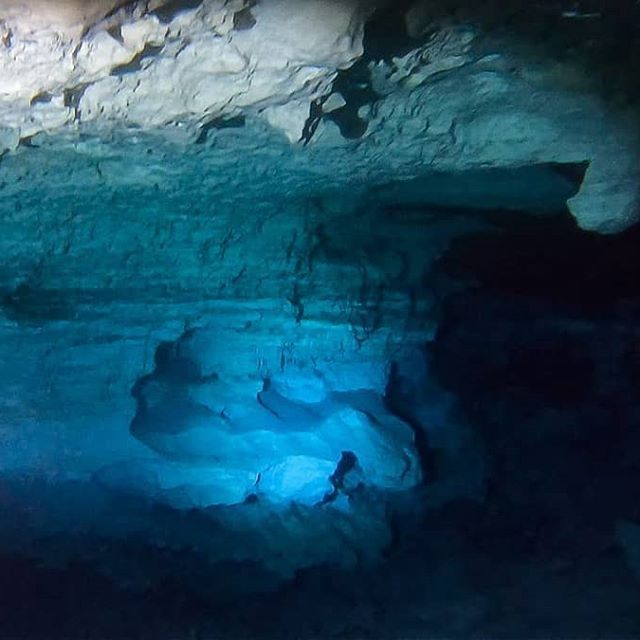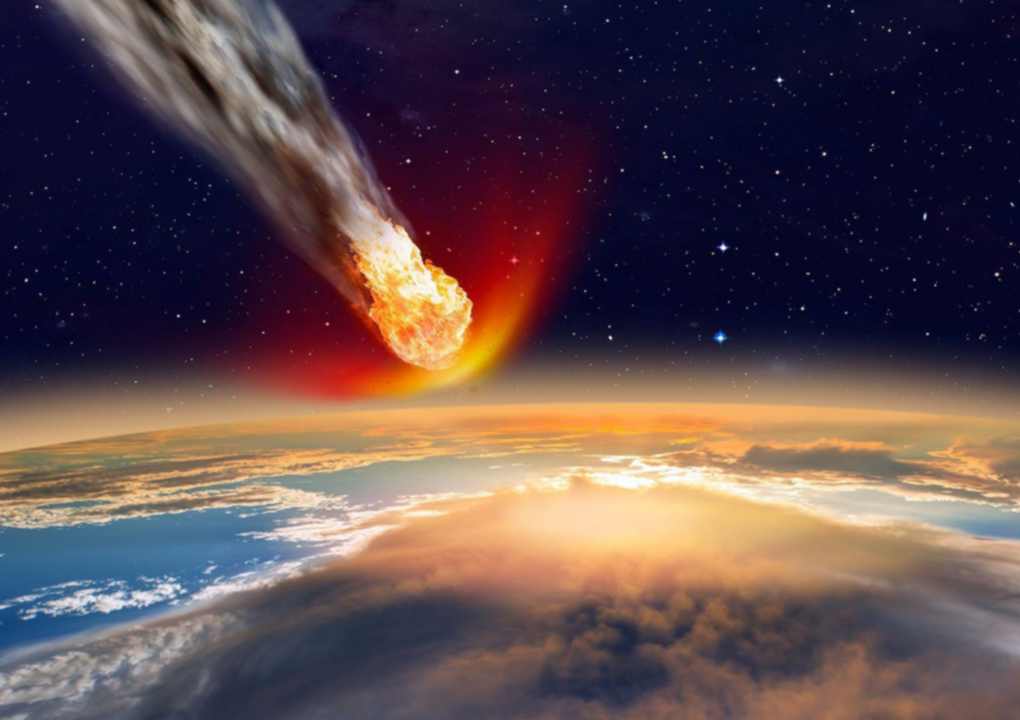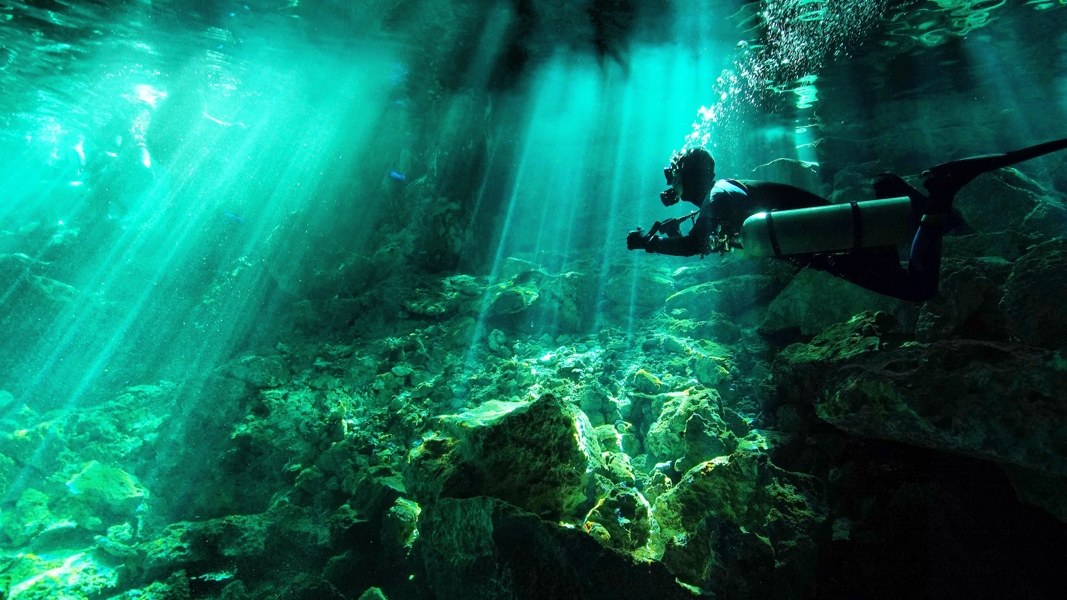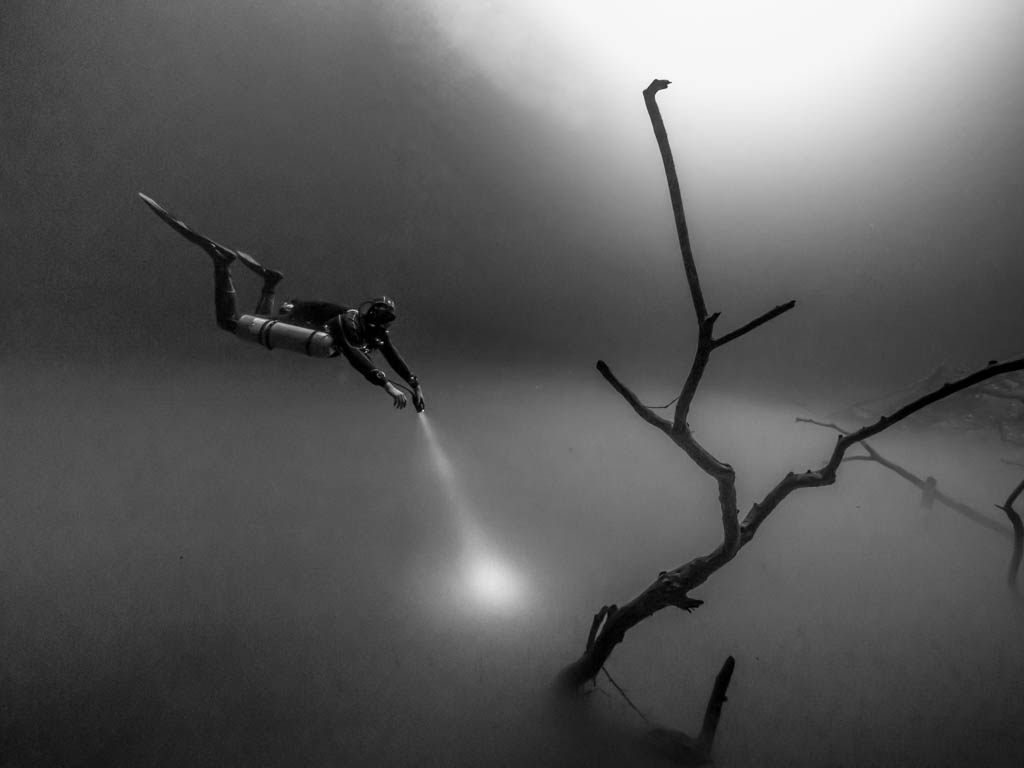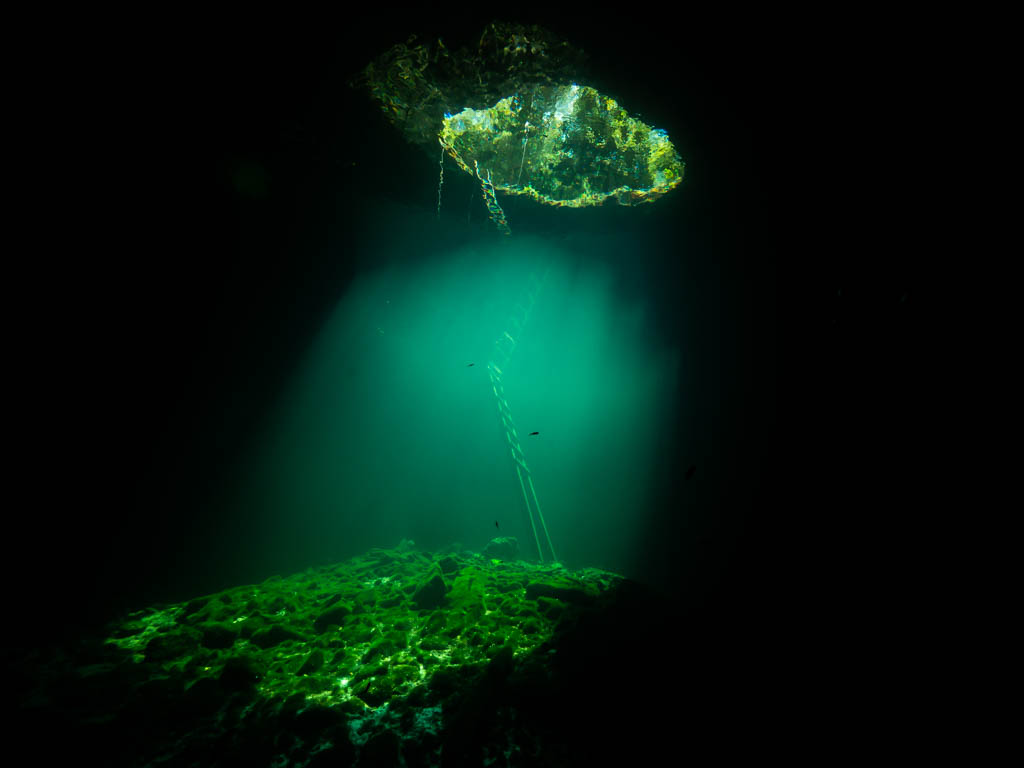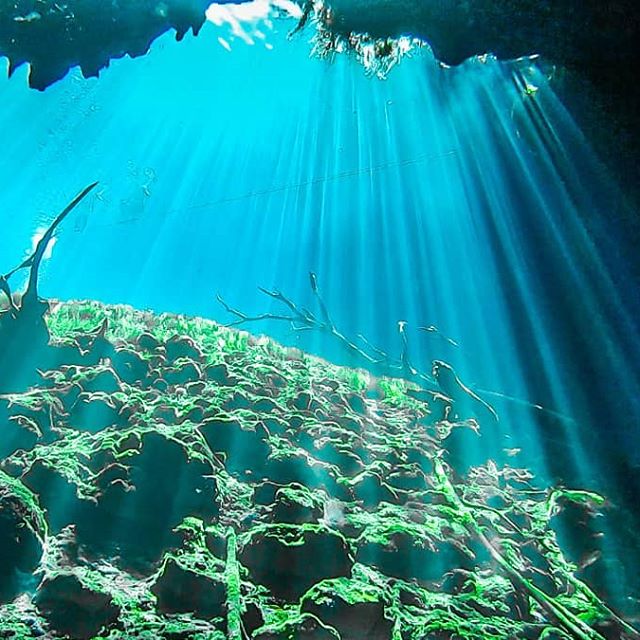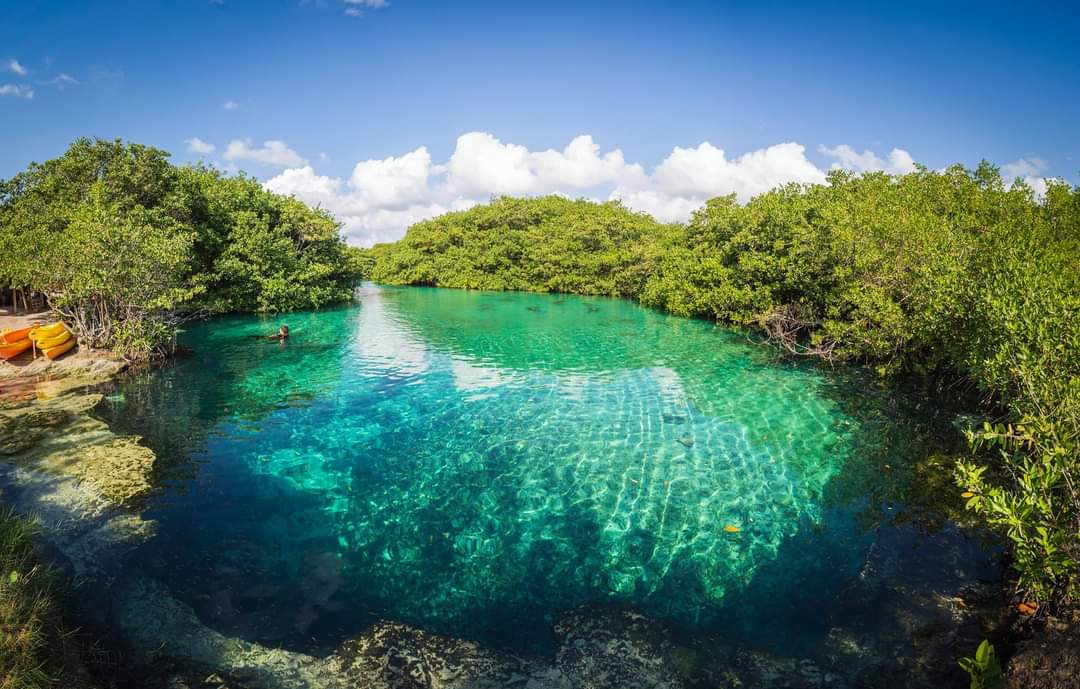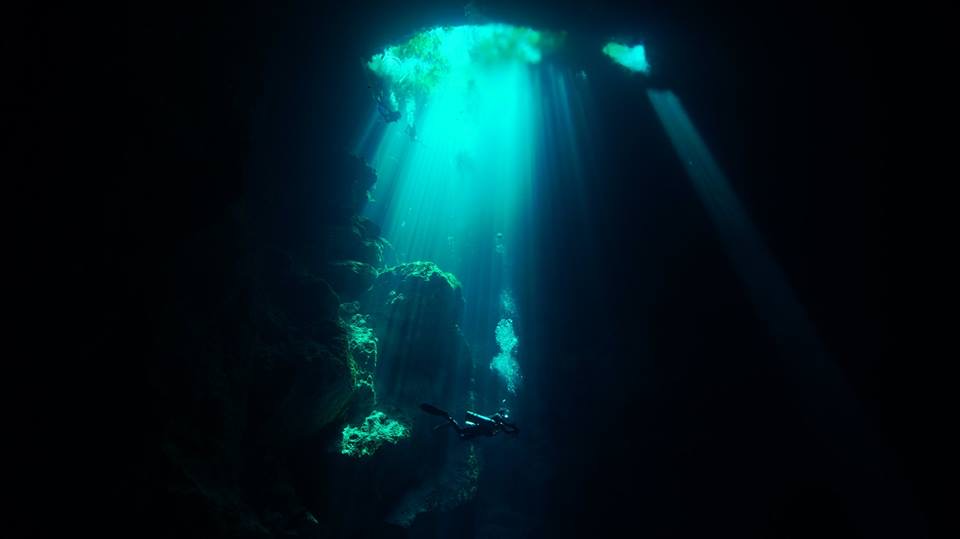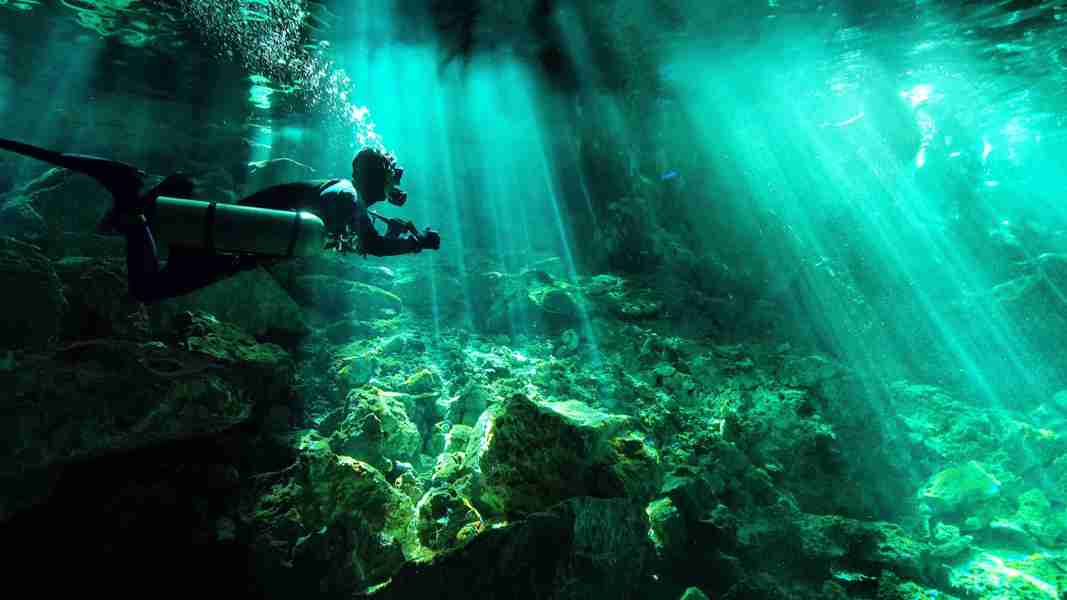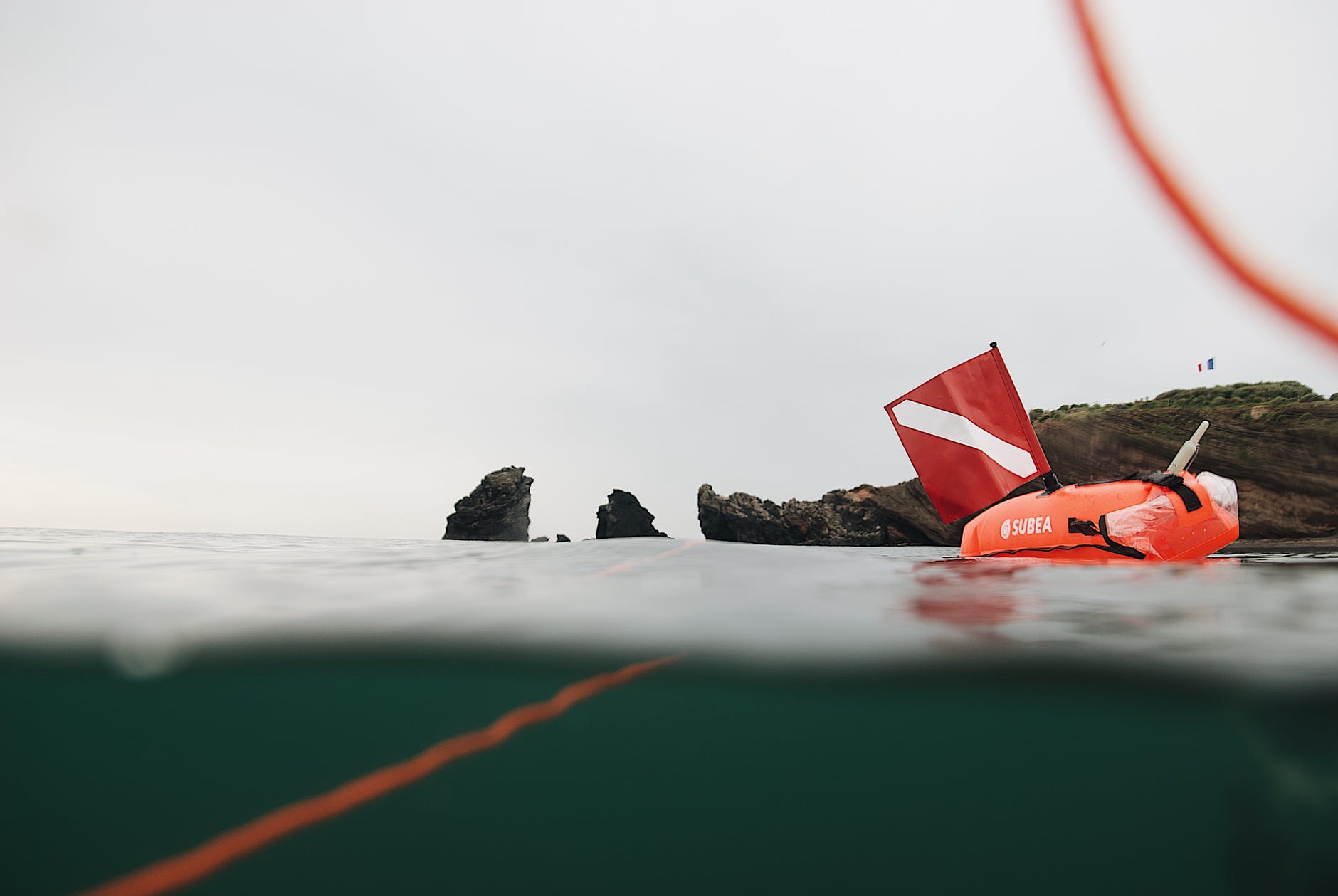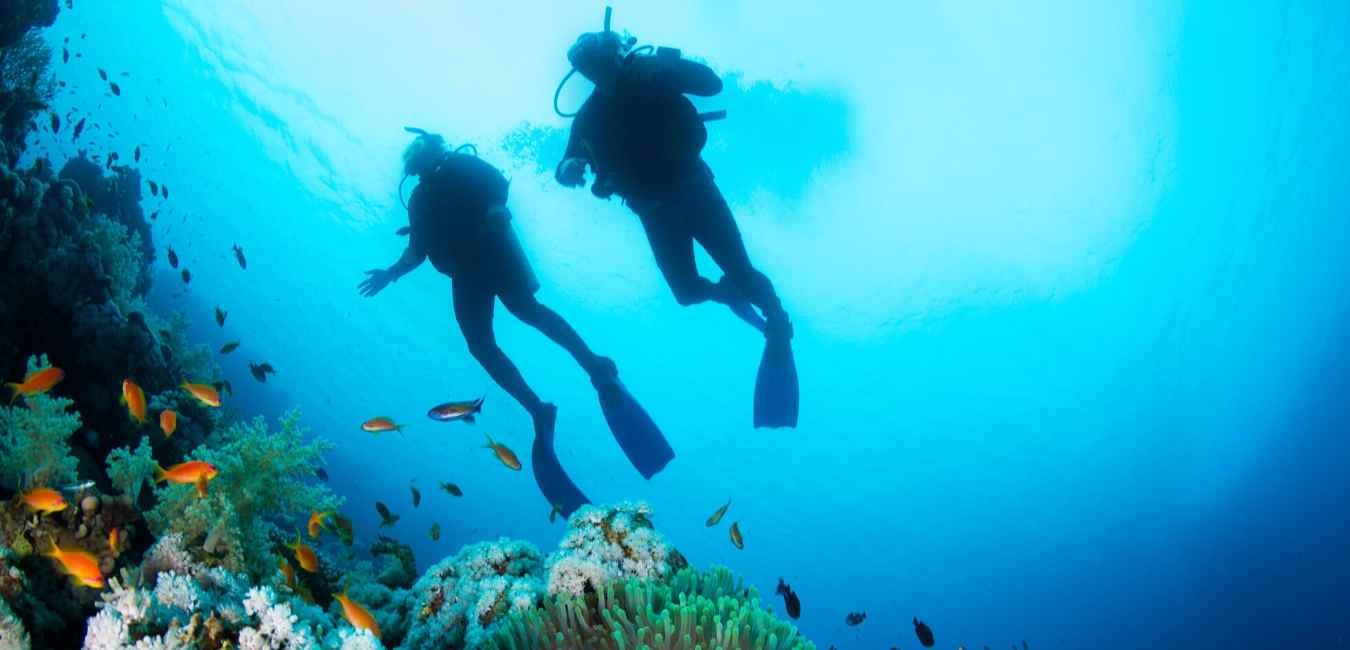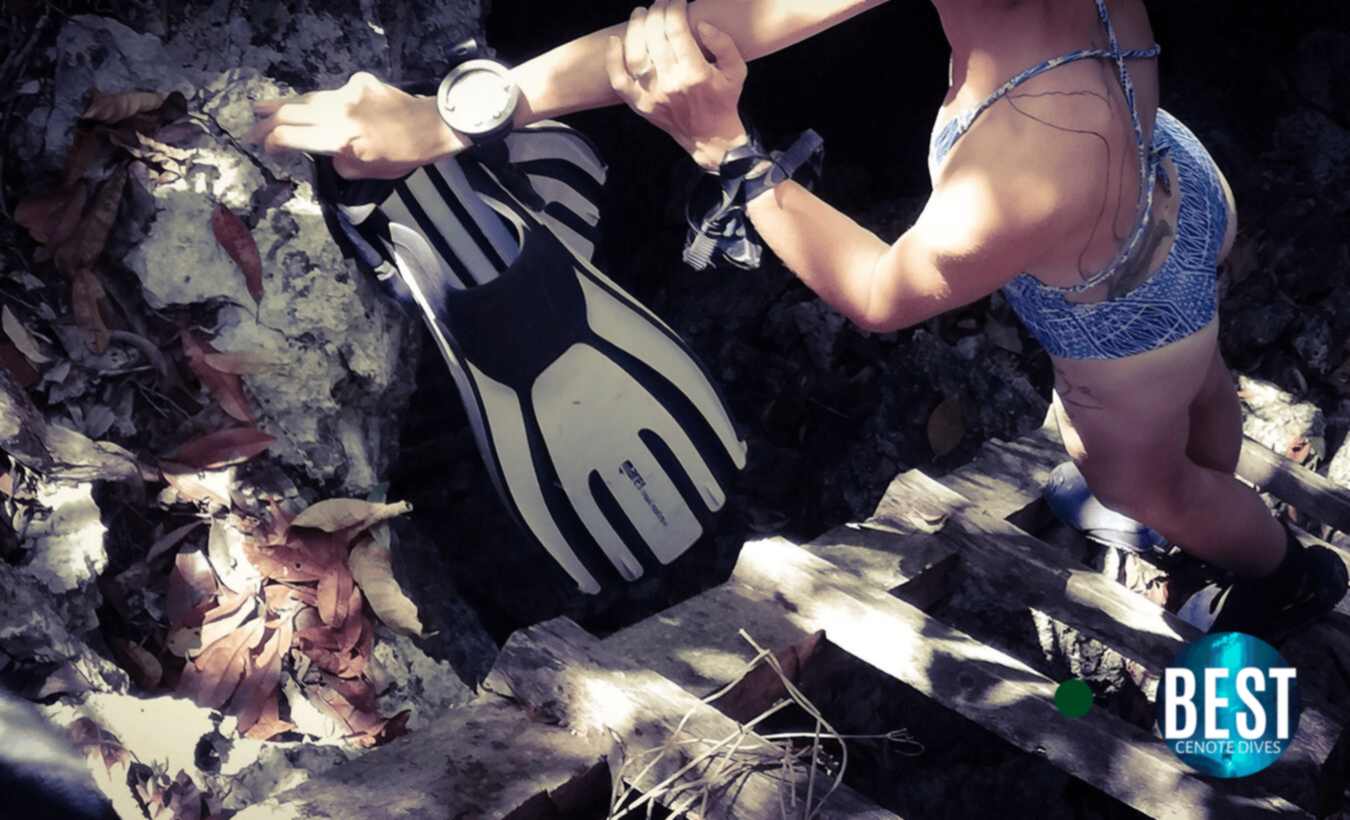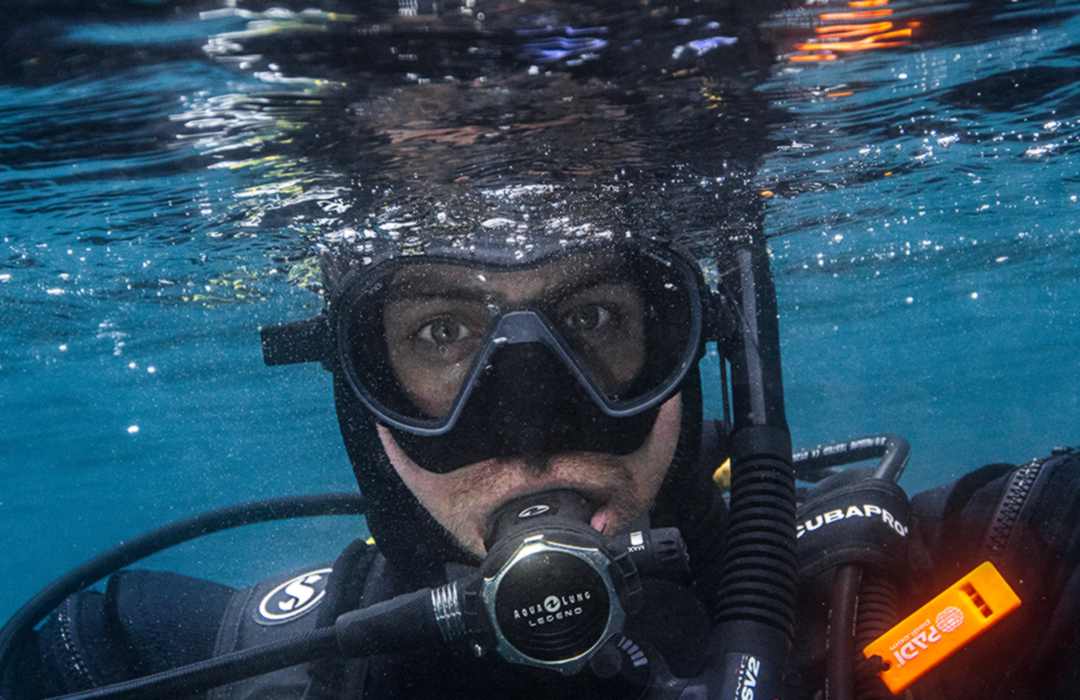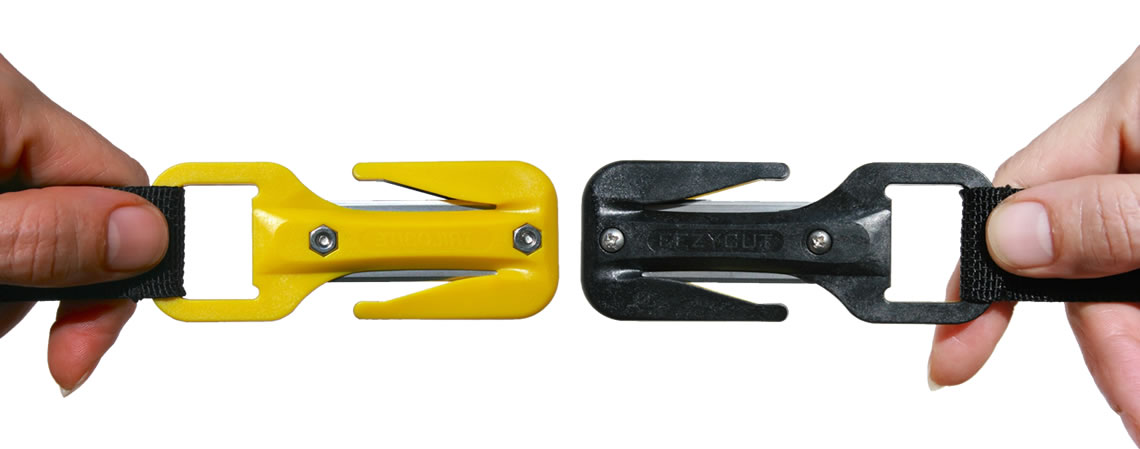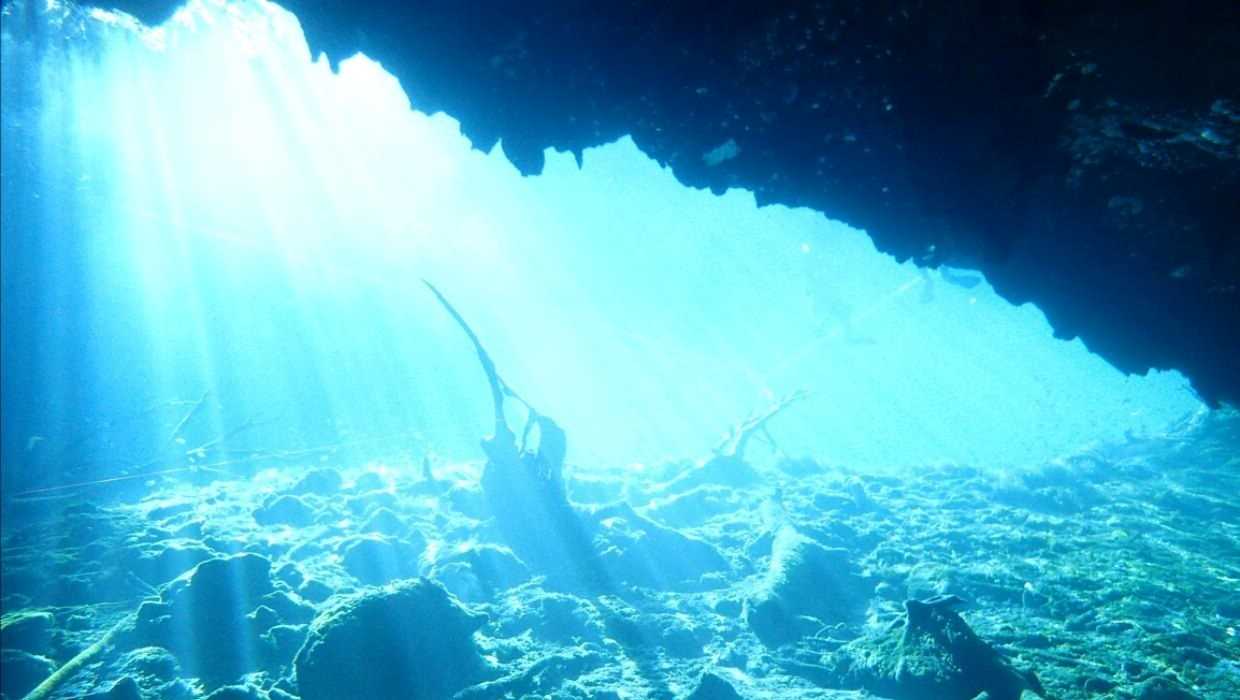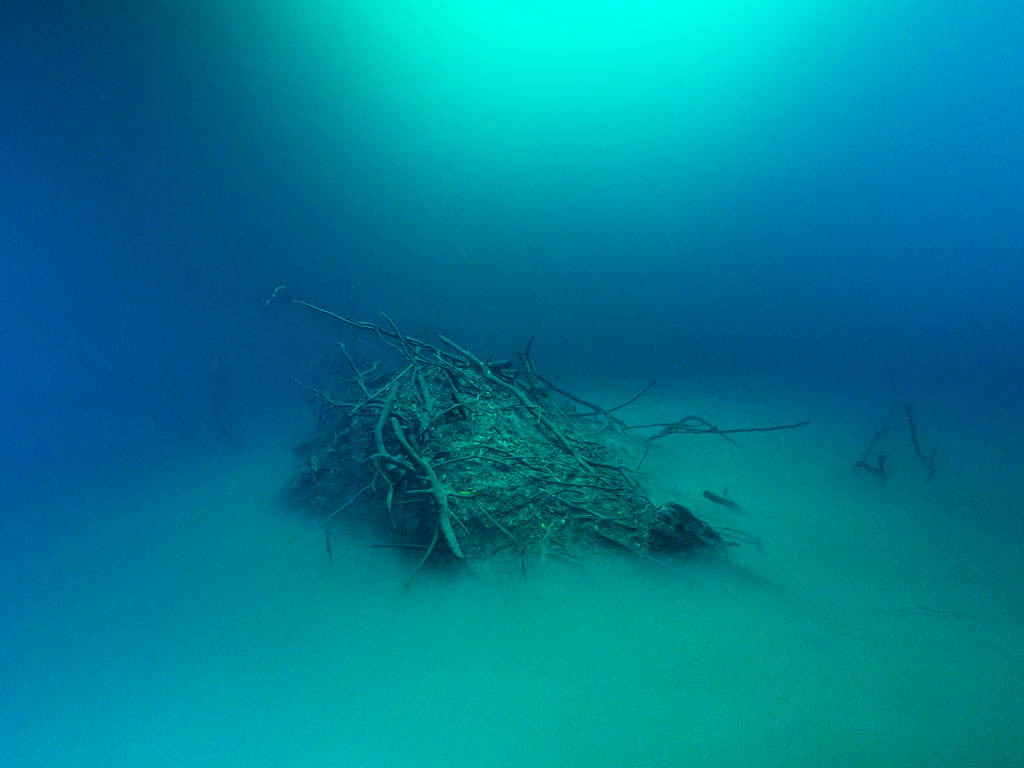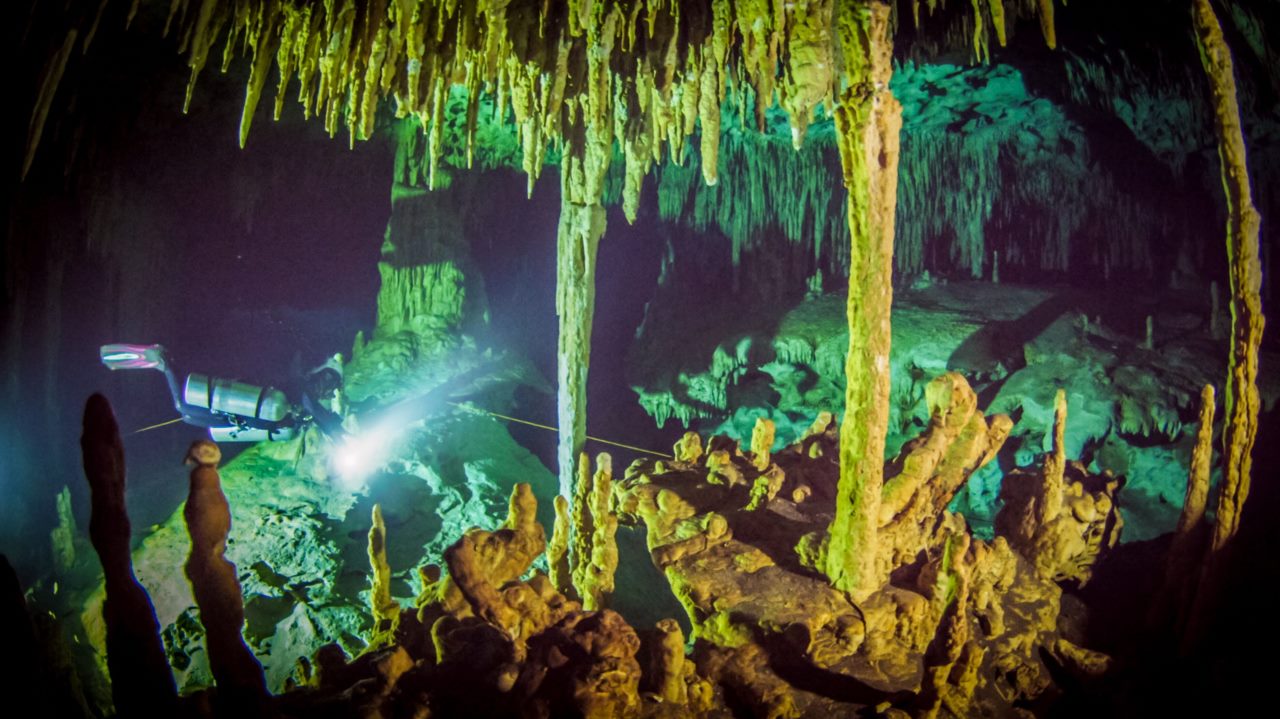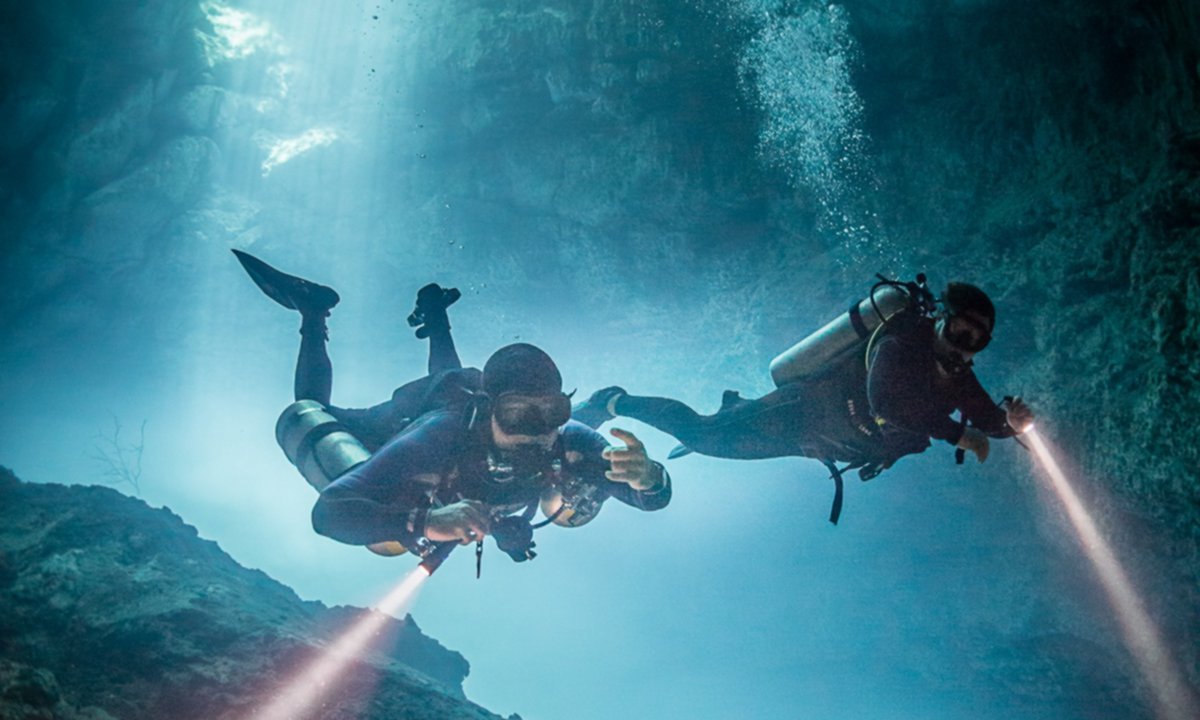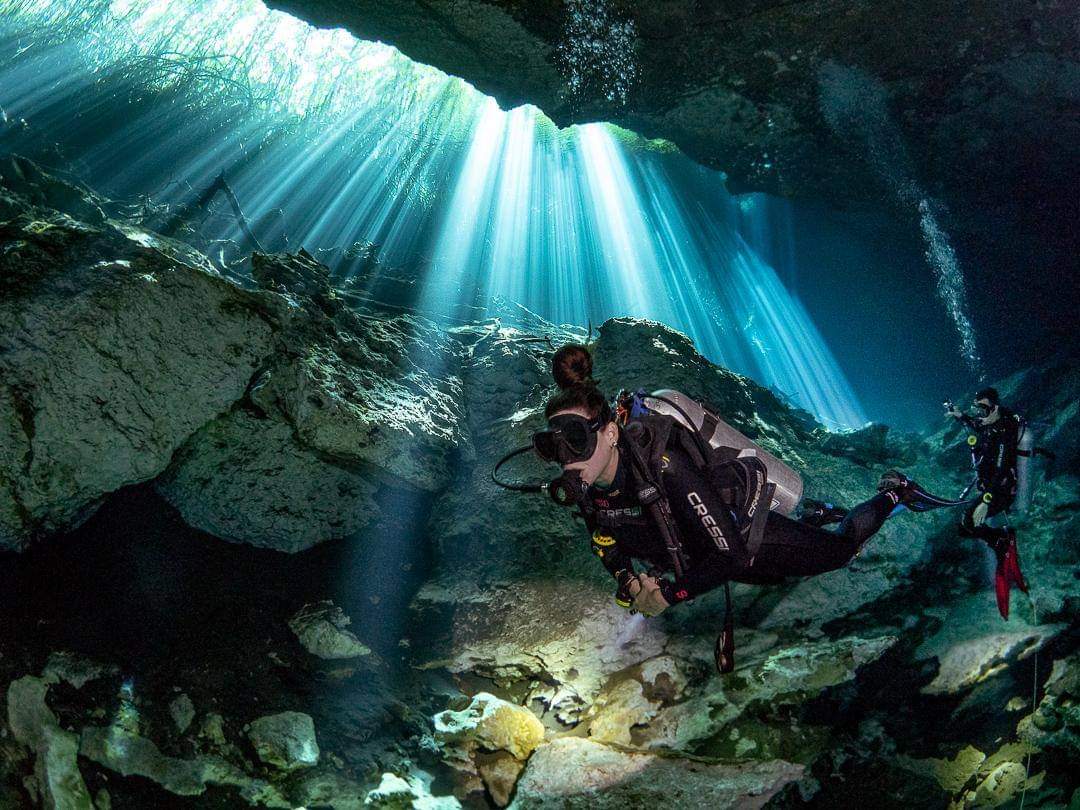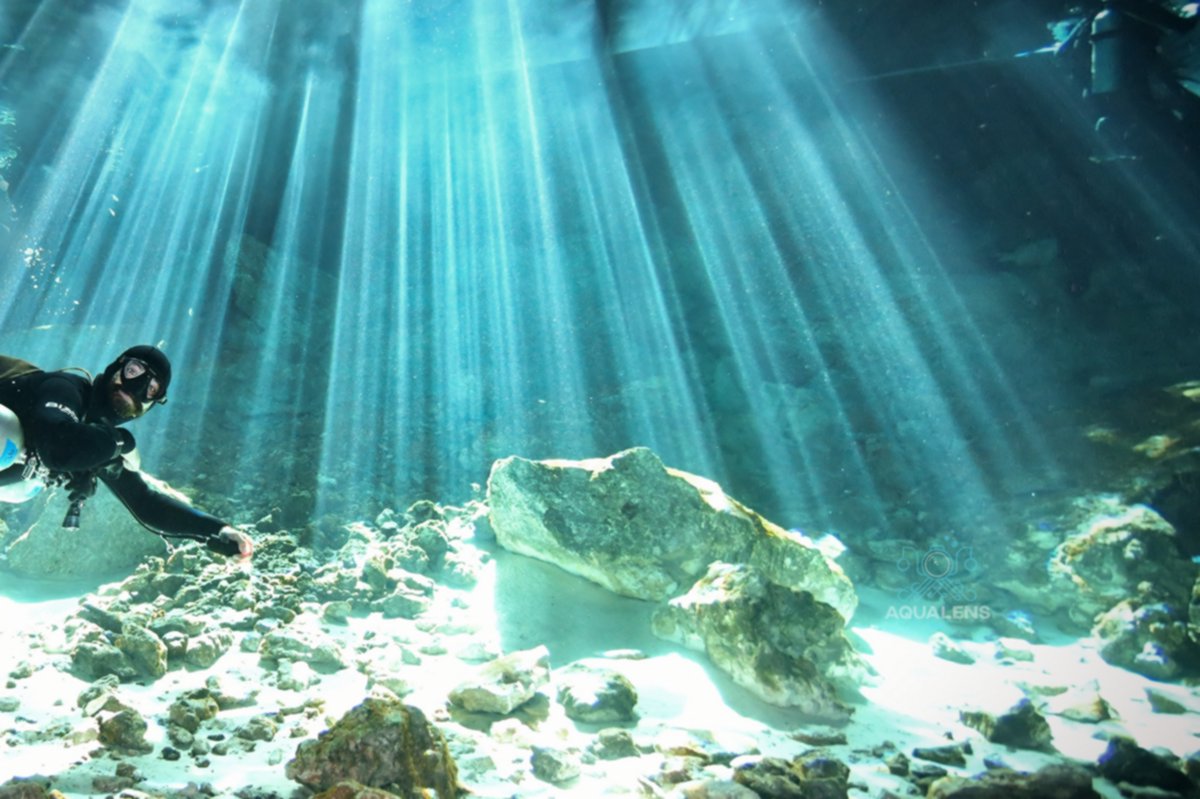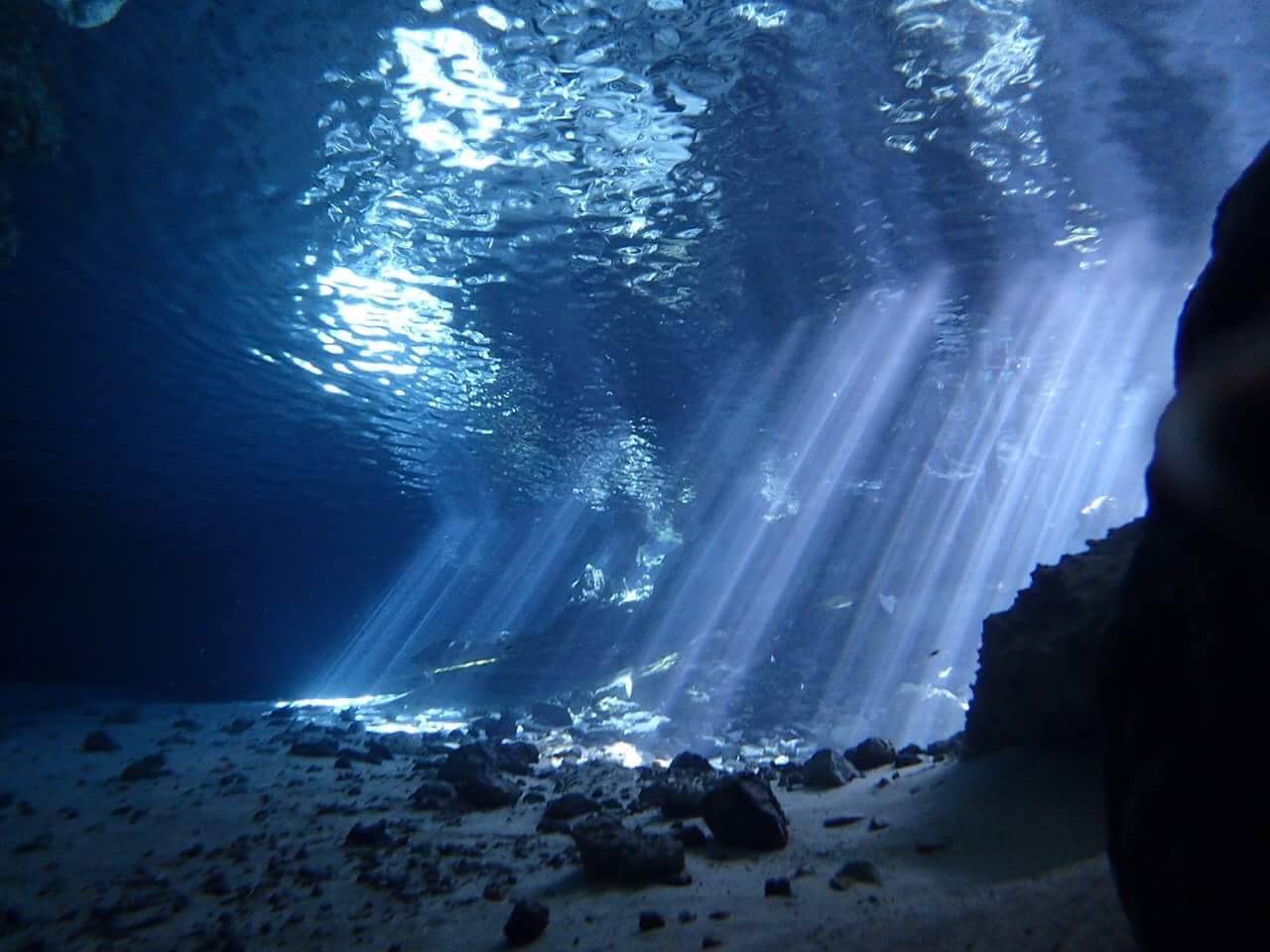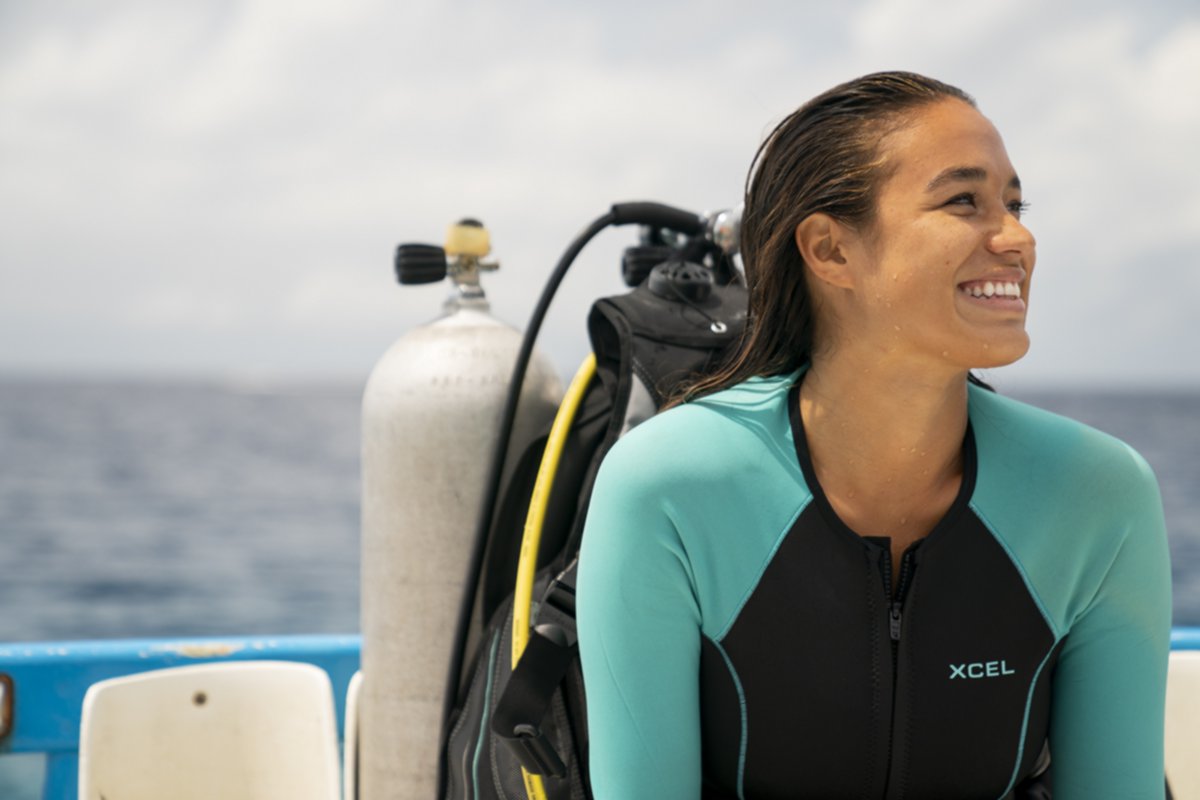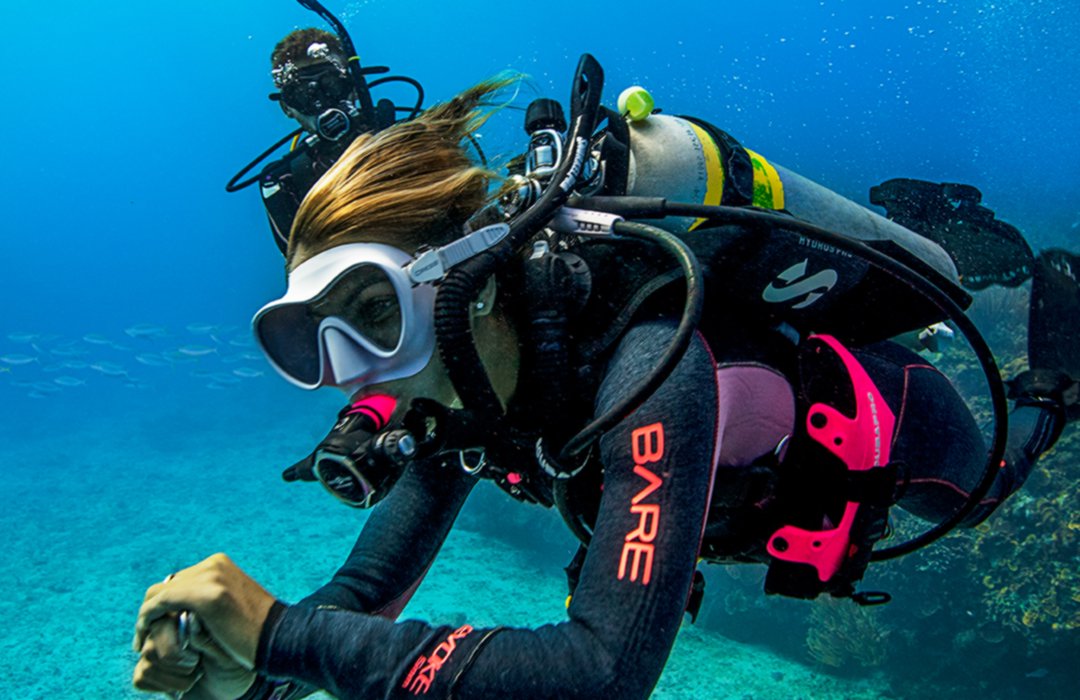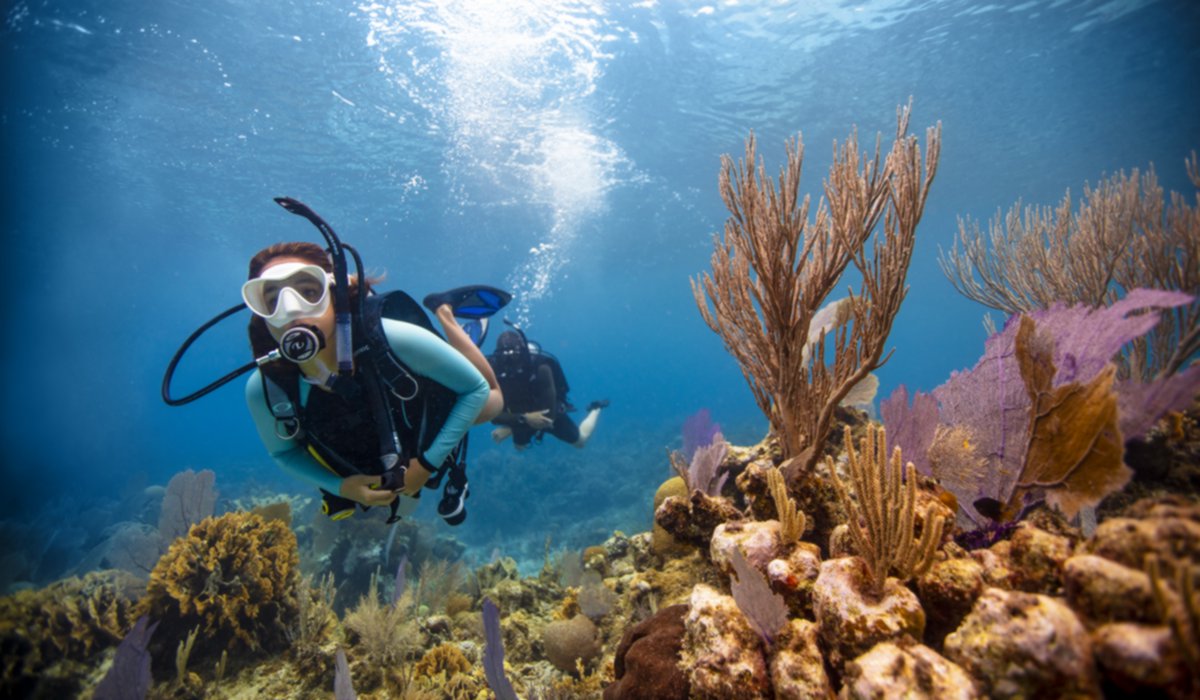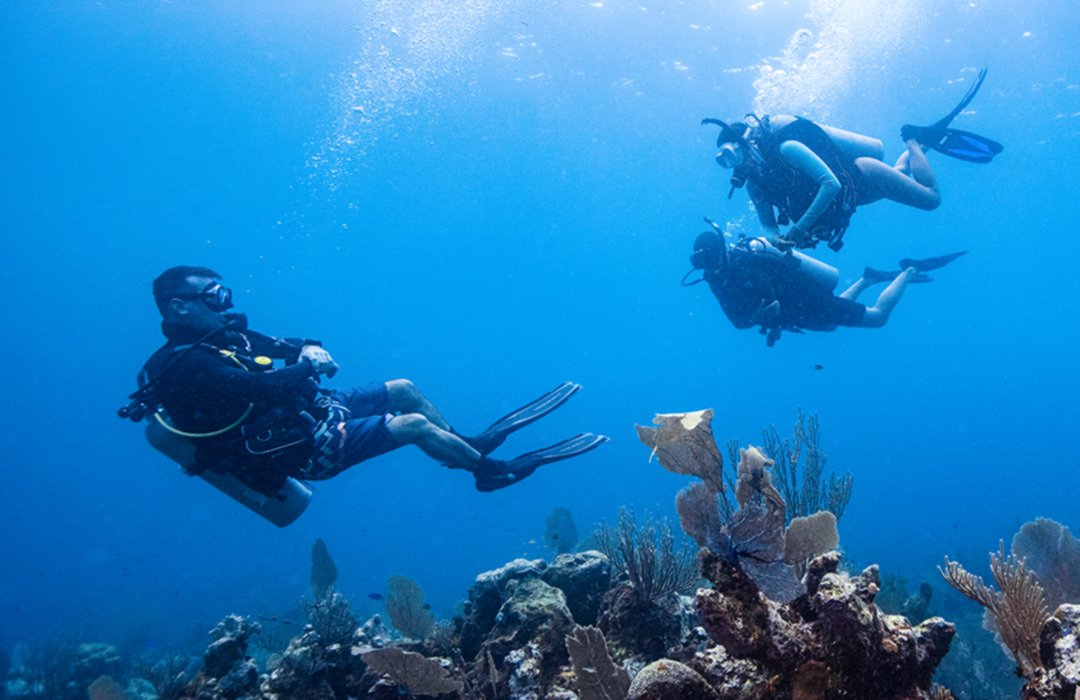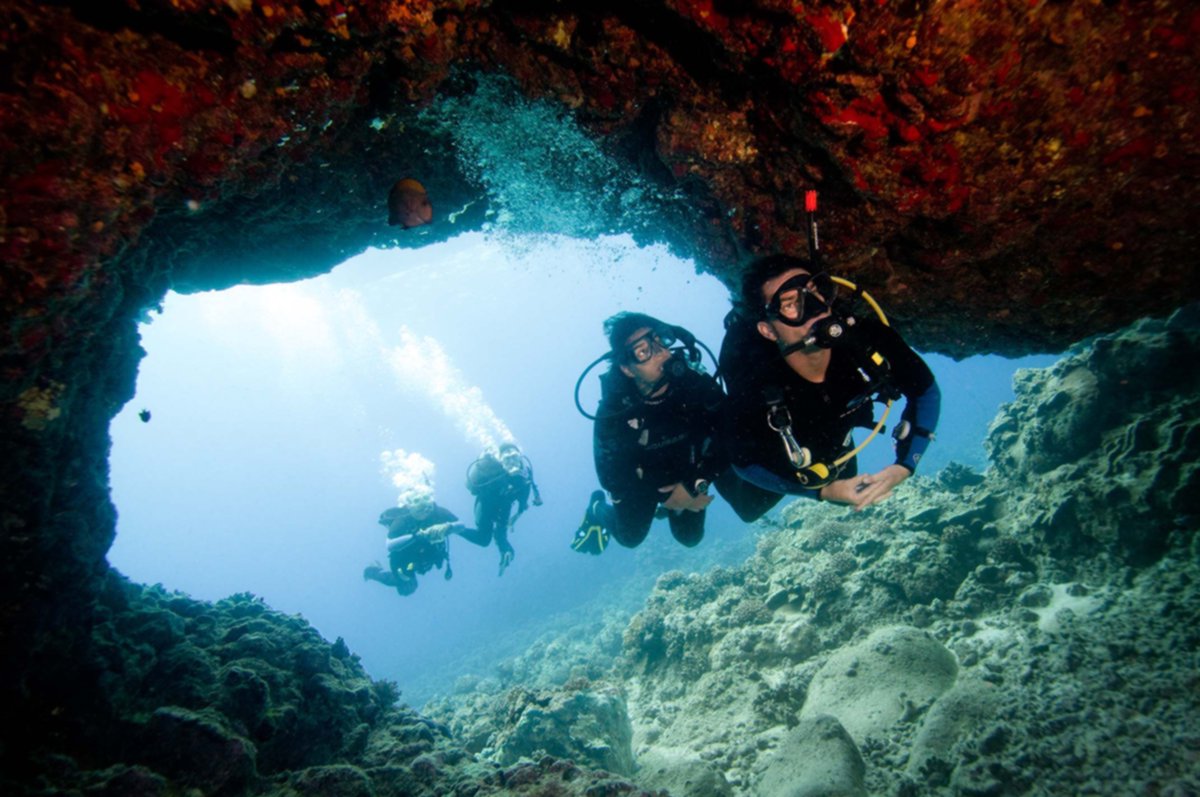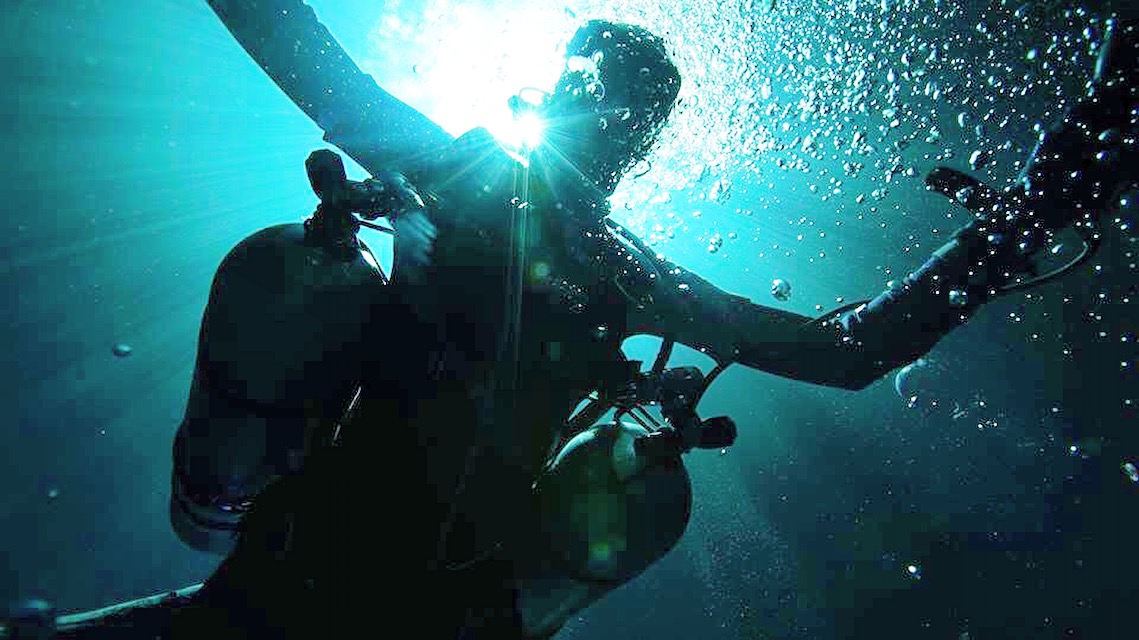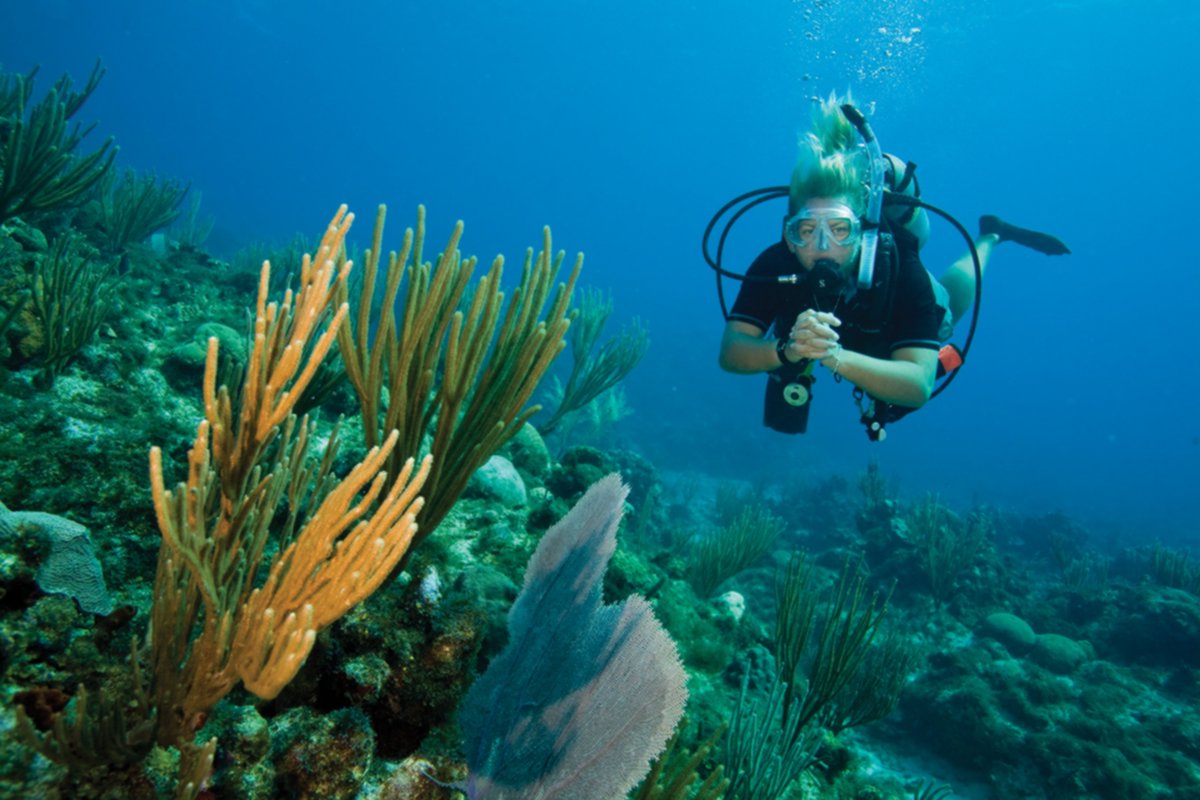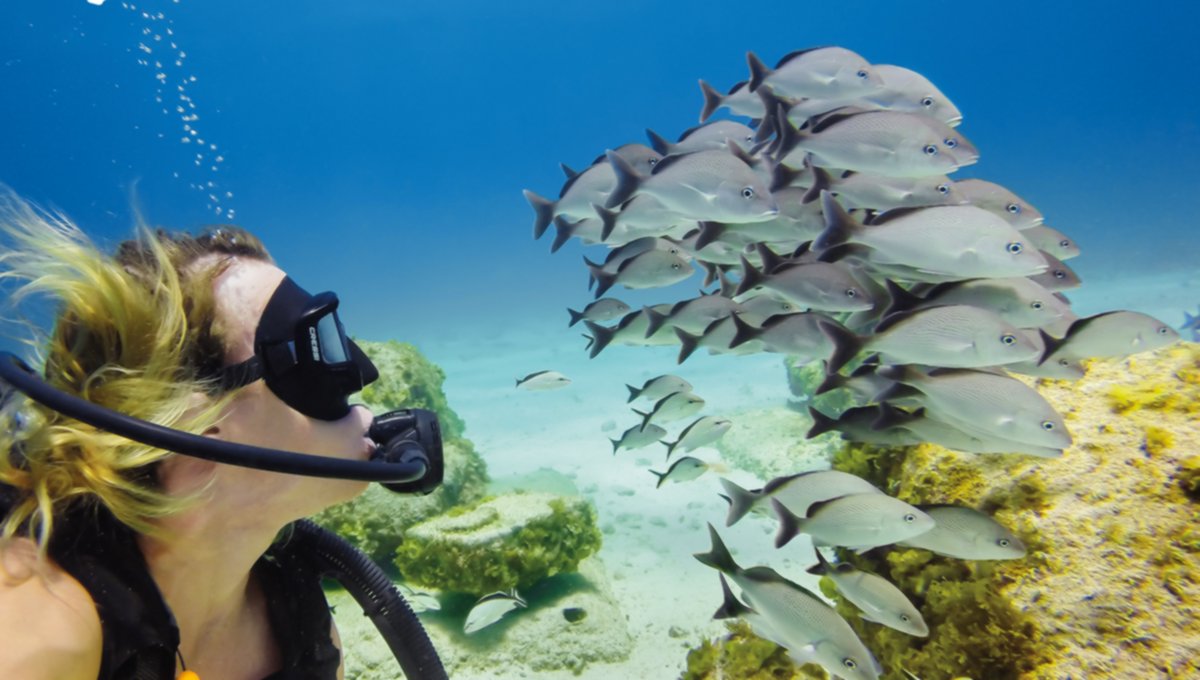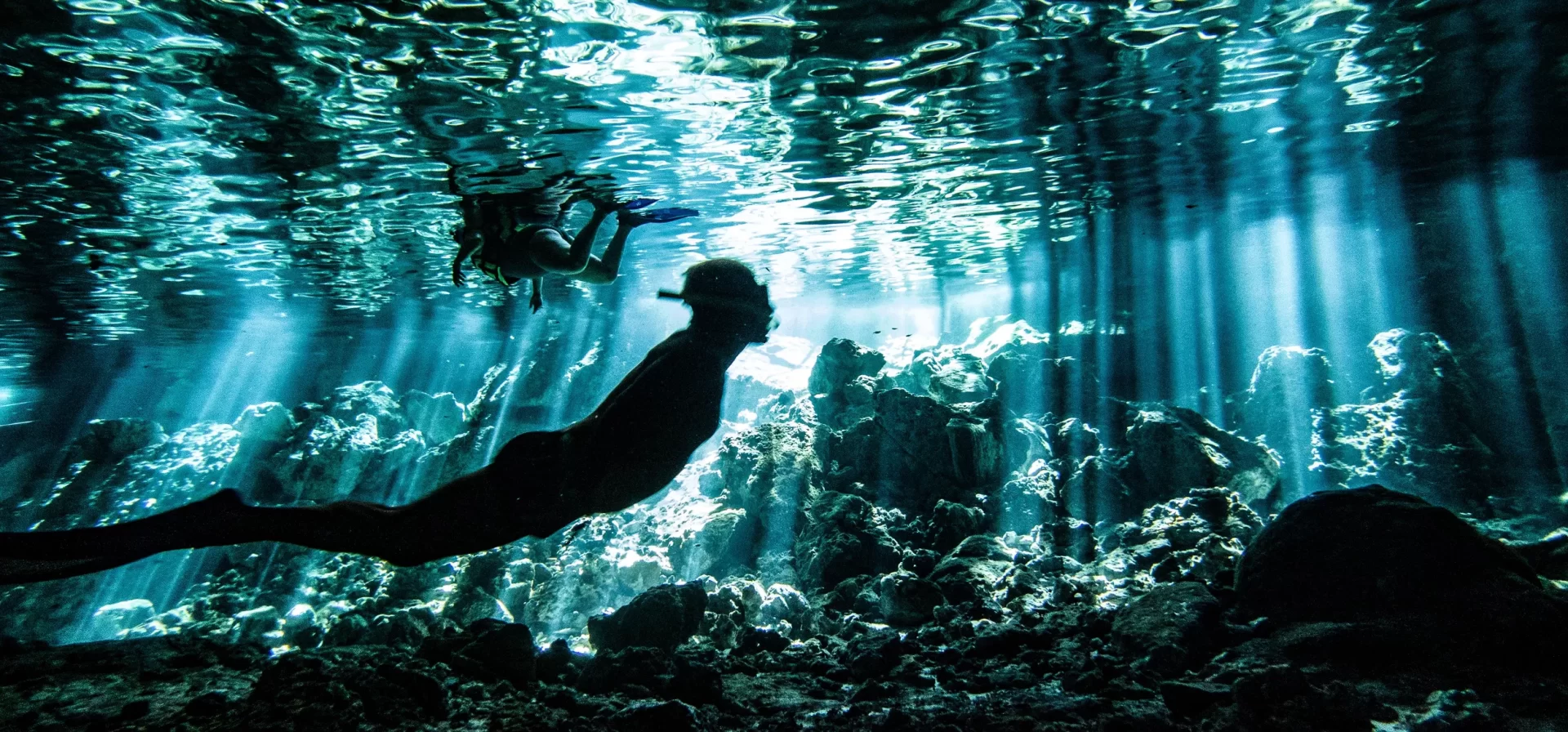What is The Pit Cenote?
The Pit Cenote is one of the most breathtaking and legendary cenotes in Mexico. Located near Tulum, this deep, vertical sinkhole offers an unforgettable dive experience, featuring:
✔ Laser-like light beams piercing the water
✔ A dramatic 119m (390ft) deep cave system
✔ A mesmerizing hydrogen sulfide cloud at depth
✔ Incredible stalactites and ancient rock formations
This is a must-dive cenote for advanced divers looking for a mind-blowing experience.
Where is The Pit Cenote?
📍 Location: Between Tulum and Playa del Carmen, just off Highway 307.
📍 Travel Time: 20 minutes from Tulum, 40 minutes from Playa del Carmen.
📍 Entrance: Follow the Dos Ojos Cenote sign, then take the jungle road to The Pit.
How Deep is The Pit Cenote?
The Pit has been explored to a maximum depth of 119m (390ft). However, for recreational divers:
✔ Max depth for Advanced Open Water divers: 40m (130ft).
✔ Technical divers with training can go deeper with special permission.
The deeper you go, the more surreal the experience becomes.
How Can I Dive The Pit?
To dive The Pit Cenote, you need:
✔ Advanced Open Water certification (or equivalent).
✔ Comfort with deep diving.
✔ Good buoyancy control.
👉 Want to dive The Pit? Book your dive here.
The Best Time to Dive The Pit
You can dive The Pit Cenote year-round, but for the best light show, timing matters:
✔ Summer (May–August): Best light beams due to the sun being directly overhead.
✔ Winter (December–February): Sunlight hits at an angle, so the best time is earlier in the day.
✔ Peak conditions: Around midday on the summer solstice, when the sun is at its highest.
The clearer the sky, the better the laser beam effect—so sunny days are ideal.
What Can You See While Diving The Pit?
Diving The Pit is like entering another dimension. Here’s what makes it so extraordinary:
1️⃣ The Light Beams – A Spectacular Natural Show
The light beams at The Pit are legendary.
☀️ Sunlight enters through the narrow opening, creating intense, laser-like beams that shoot down into the cavern.
💫 Ripples on the surface bend the light, creating dancing, shifting beams that feel like something out of a sci-fi movie.
📷 Photographers and videographers love it—it’s one of the most visually stunning underwater experiences in the world.
👉 Best time for the light beams? Midday in summer.
2️⃣ The Halocline – A Mirage Underwater
At around 12–15m (40–50ft), you pass through a halocline—the layer where freshwater meets saltwater.
🔹 Light bends and distorts—making the world look like a wavy mirage.
🔹 Your vision momentarily blurs, but as you descend below the halocline, the clarity returns.
It’s like diving through a portal into another world.
3️⃣ The Hydrogen Sulfide Cloud – Like a Ghostly River
At 30m (100ft), we reach the hydrogen sulfide cloud.
💨 It looks like a thick layer of fog, floating in the water.
🦴 Beneath it, hidden from light, lie ancient bones and artifacts.
💀 Archaeologists have found human and animal remains—evidence of a time when this cenote was dry.
Swimming through the ethereal white cloud feels surreal, as if you’re floating through mist.
👉 The best way to experience it? Descend into the cloud, then slowly rise above it.
4️⃣ The Stalactites & Ancient Rock Formations
At the back of The Pit, we find:
✔ Giant stalactites hanging from the ceiling.
✔ Stalagmites rising from the floor, proving the cenote was once dry.
✔ Mercury-like air pockets on the ceiling, shimmering in the light.
This is a journey through time—a glimpse into Earth’s prehistoric past.
5️⃣ The Multi-Level Dive Experience
🔹 Deep Section (30–40m/100–130ft): Descend through the hydrogen sulfide cloud, explore the vast cavern, and feel the scale of The Pit.
🔹 Mid Section (15–25m/50–80ft): Hover near the rock formations and see the remains of ancient artifacts.
🔹 Upper Section (5–12m/15–40ft): Enjoy the halocline, play with light refraction, and get the best views of the laser beams.
A well-planned dive maximizes the experience at every depth level.
Why The Pit is One of the Best Dives in the World
🌎 I’ve worked in diving all over the world, and I can confidently say:
👉 The Pit Cenote is one of the most incredible dive sites anywhere.
Unlike ocean dives, where you expect to see coral and fish, The Pit challenges expectations.
✔ It’s about light and shadows.
✔ It’s about science and history.
✔ It’s about time and space.
The Pit makes you feel small—reminding you that you’re diving through a place millions of years old.
Everyone who dives The Pit comes up amazed. Some people are even deeply moved—touched by the same magic I experience every time I dive here.
Ready to Dive The Pit Cenote?
The Pit Cenote isn’t just a deep dive—it’s an adventure through time, light, and space.
✔ Experience the famous light beams.
✔ Descend through the hydrogen sulfide cloud.
✔ See ancient formations millions of years old.
📍 Requirements:
✔ Advanced Open Water Certification
✔ Good buoyancy control
✔ Love for adventure
